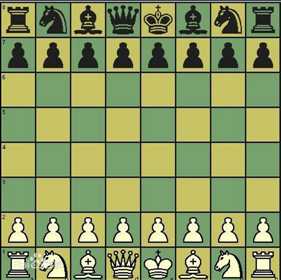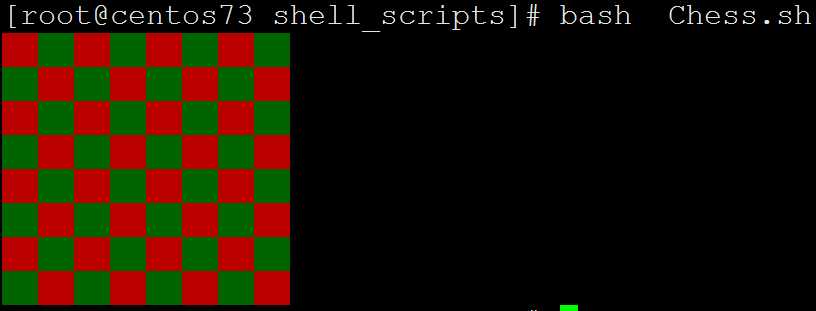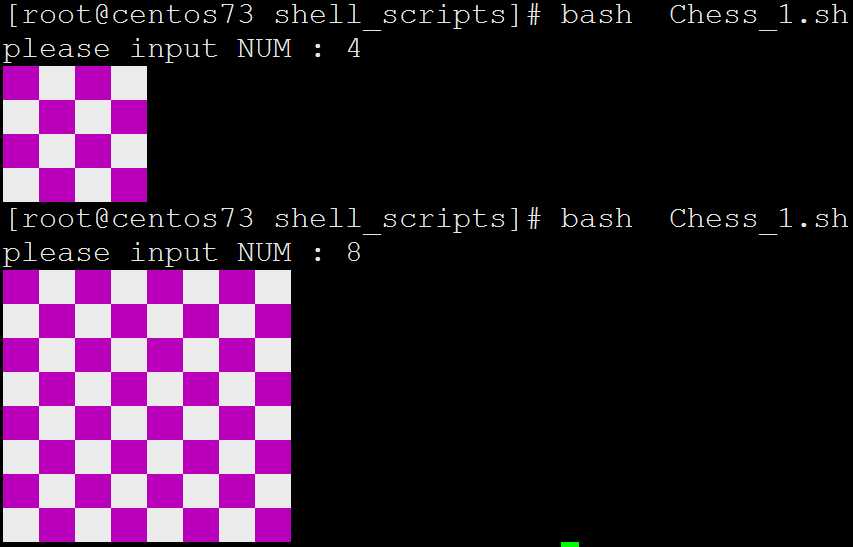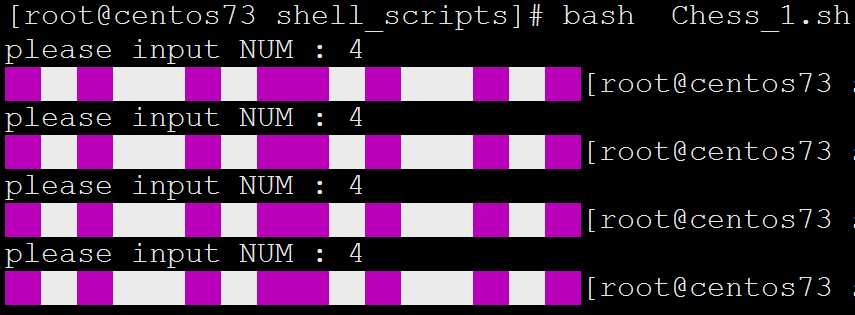for循环语句示例
Posted wang618
tags:
篇首语:本文由小常识网(cha138.com)小编为大家整理,主要介绍了for循环语句示例相关的知识,希望对你有一定的参考价值。
for循环语句示例
一判断/var/目录下所有文件的类型
完整脚本
[[email protected] ~]# cat shell_scripts/filetype.sh
#!/bin/bash
#Author=wang
RED="\\033[31m"
YELLOW="\\033[0;33m"
CYAN="\\033[36m"
PURPLE="\\033[0;35m"
RESET="\\033[0m"
if [ $# -ne 1 ] ; then
echo -e "$RED you must enter a parameter$RESET"
exit 1
fi
file=$1
type=`ls -ld $file |cut -c 1`
#使用case判断文件类型
case $type in
-)
echo -e "$CYAN general file$RESET"
;;
d)
echo -e "$YELLOW dir$RESET"
;;
l)
echo -e "$PURPLE link file$RESET"
;;
*)
echo "other"
;;
esac
执行结果
[[email protected] ~]# bash filetype.sh you must enter a parameter [[email protected] ~]# bash filetype.sh /etc/passwd general file [[email protected] ~]# bash filetype.sh /etc/ dir [[email protected] ~]# bash filetype.sh /etc dir
[[email protected] ~]# bash filetype.sh /bin/python link file [[email protected] ~]# bash filetype.sh /bin/python link file [[email protected] ~]# bash filetype.sh /bin/python link file [[email protected] ~]# echo $PATH /root/shell_scripts:/usr/local/sbin:/usr/local/bin:/usr/sbin:/usr/bin:/root/bin


脚本解析
涉及到了颜色,相关知识参考博客给输出的字符或者字符串添加颜色
先判断参数,也就是文件是否存在
if [ $# -ne 1 ] ; then
echo -e "$RED you must enter a parameter$RESET"
exit 1
第1个参数赋值给变量
file=$1
type=`ls -ld $file |cut -c 1`
[[email protected] ~]# ll -d /etc/passwd -rw-r--r--. 1 root root 2766 Jun 29 16:52 /etc/passwd [[email protected] ~]# ll -d /etc/passwd | cut -c 1 -
二/etc/rc.d/rc3.d目录下分别有多个以K开头和以S开头的文件
分别读取每个文件,以K开头的输出为文件加stop,以S开头的输出为文件名加start
如K34filename stop,S66filename start
完整脚本
[[email protected] shell_scripts]# cat file_KS.sh #!/bin/bash #Author=wang for i in `ls -1 /etc/rc.d/rc3.d` ; do type=`echo $i | cut -c 1 ` if [ "$type" == "S" ] ; then echo "$i start" elif [ "$type" == "K" ] ; then echo "$i stop" else echo "$i unkown" fi done
[[email protected] shell_scripts]# ls -1 /etc/rc.d/rc3.d K50netconsole S10network [[email protected] shell_scripts]# ls -1 /etc/rc.d/rc3.d | cut -c 1 K S
执行结果
[[email protected] shell_scripts]# bash file_KS.sh K50netconsole stop S10network start
三提示输入正整数n的值,计算1+2+…+n的总和
完整脚本
[[email protected] shell_scripts]# cat sum.sh #!/bin/bash #Author=wang if [ $# -ne 1 ] ; then echo "you must enter a parameter" exit 1 fi n=$1 digit="^[0-9]+$" if [[ ! $n =~ $digit ]]; then echo "not a digit" exit 2 fi declare -i sum=0 #将变量定义为整形 for i in `seq 1 $n`;do sum+=$i done echo $sum
执行结果
[[email protected] shell_scripts]# bash sum.sh 1 1 [[email protected] shell_scripts]# bash sum.sh 2 3 [[email protected] shell_scripts]# bash sum.sh 3 6 [[email protected] shell_scripts]# bash sum.sh 4 10 [[email protected] shell_scripts]# bash sum.sh 5 15 [[email protected] shell_scripts]# bash sum.sh 6 21 [[email protected] shell_scripts]# bash sum.sh 7 28 [[email protected] shell_scripts]# bash sum.sh 8 36 [[email protected] shell_scripts]# bash sum.sh 9 45 [[email protected] shell_scripts]# bash sum.sh 100 5050
四打印九九乘法表
1*1=1
1*2=2 2*2=4
1*3=3 2*3=6 3*3=9
......
1*9=9 2*9 ... 9*9
要打印9行就要执行9次循环,第几行就循环几遍,第1行循环1遍,第9行循环9遍。
被乘数的值是从1到所在的行号,乘数就是所在行的行号。
完整脚本
[[email protected] shell_scripts]# cat nine_nine_multiplication_table.sh #!/bin/bash #Author=wang for ((i=1;i<=9;i++));do for ((j=1;j<=i;j++));do echo -ne "$jx$i=$[$i*$j]\\t"
#\\t表示插入tab。联系Linux可以使用tab键补齐,并且在文件里面输入tab键会退固定的空格
done echo done
执行结果
[[email protected] shell_scripts]# bash nine_nine_multiplication_table.sh 1x1=1 1x2=2 2x2=4 1x3=3 2x3=6 3x3=9 1x4=4 2x4=8 3x4=12 4x4=16 1x5=5 2x5=10 3x5=15 4x5=20 5x5=25 1x6=6 2x6=12 3x6=18 4x6=24 5x6=30 6x6=36 1x7=7 2x7=14 3x7=21 4x7=28 5x7=35 6x7=42 7x7=49 1x8=8 2x8=16 3x8=24 4x8=32 5x8=40 6x8=48 7x8=56 8x8=64 1x9=9 2x9=18 3x9=27 4x9=36 5x9=45 6x9=54 7x9=63 8x9=72 9x9=81
脚本解析
使用for语句第2种语法,并且涉及到了两个变量
for ((i=1;i<=9;i++));do
for ((j=1;j<=i;j++));do
"$jx$i=$[$i*$j]\\t" 因为x是字母,两个变量要使用花括号括起来
涉及到变量引用
变量引用:$name $name
" ":弱引用,其中的变量引用会被替换为变量值
‘ ‘:强引用,其中的变量引用不会被替换为变量值,而保持原字符串
[[email protected] ~]# echo "a" a [[email protected] ~]# echo "$a" 1 [[email protected] ~]# echo $a 1 [[email protected] ~]# echo ‘$a‘ $a
不合格脚本,原因在于没有tab键
[[email protected] shell_scripts]# cat nine_nine_multiplication_table.sh #!/bin/bash #Author=wang for ((i=1;i<=9;i++));do for ((j=1;j<=i;j++));do echo -ne "$jx$i=$[$i*$j]" done echo done
[[email protected] shell_scripts]# bash nine_nine_multiplication_table.sh 1x1=1 1x2=22x2=4 1x3=32x3=63x3=9 1x4=42x4=83x4=124x4=16 1x5=52x5=103x5=154x5=205x5=25 1x6=62x6=123x6=184x6=245x6=306x6=36 1x7=72x7=143x7=214x7=285x7=356x7=427x7=49 1x8=82x8=163x8=244x8=325x8=406x8=487x8=568x8=64 1x9=92x9=183x9=274x9=365x9=456x9=547x9=638x9=729x9=81
五在/testdir目录下创建10个html文件,
文件名格式为数字N(从1到10)加随机8个字母
在/testdir目录下创建10个html文件,文件名格式为数字N(从1到10)加随机8个字母,如:1AbCdeFgH.html
完整脚本
[[email protected] shell_scripts]# cat randhtml_1.sh #!/bin/bash #Author=wang dir=/testdir if [ ! -d $dir ] ; then mkdir -pv $dir &>/dev/null fi for i in `seq 1 10` ; do rand=`openssl rand -base64 10 | sed -rn "[email protected][^[:alpha:]]@@gp"|head -c 8` touch $dir/$i$rand.html done
执行结果
[[email protected] shell_scripts]# bash randhtml_1.sh [[email protected] shell_scripts]# ls /testdir/ 10DtiEyzsk.html 2htpVNwja.html 4ysrokezy.html 6bPaFMedz.html 8hJRPmQxQ.html 1TUWVBvMC.html 3YtFXYSZm.html 5COTAQDfG.html 7RqvJatMs.html 9xnGiosvG.html [[email protected] shell_scripts]# ls /testdir/ -l total 0 -rw-r--r--. 1 root root 0 Jul 1 08:58 10DtiEyzsk.html -rw-r--r--. 1 root root 0 Jul 1 08:58 1TUWVBvMC.html -rw-r--r--. 1 root root 0 Jul 1 08:58 2htpVNwja.html -rw-r--r--. 1 root root 0 Jul 1 08:58 3YtFXYSZm.html -rw-r--r--. 1 root root 0 Jul 1 08:58 4ysrokezy.html -rw-r--r--. 1 root root 0 Jul 1 08:58 5COTAQDfG.html -rw-r--r--. 1 root root 0 Jul 1 08:58 6bPaFMedz.html -rw-r--r--. 1 root root 0 Jul 1 08:58 7RqvJatMs.html -rw-r--r--. 1 root root 0 Jul 1 08:58 8hJRPmQxQ.html -rw-r--r--. 1 root root 0 Jul 1 08:58 9xnGiosvG.html
脚本解析
[[email protected] ~]# openssl rand -base64 10 9HlYaAoiWqYhHQ== [[email protected] ~]# openssl rand -base64 10 hhT85PKosPFIrQ== [[email protected] ~]# openssl rand -base64 10 cZW6W01bbEHAlA==
[[email protected] ~]# openssl rand -base64 10 |sed -rn "[email protected][^[:alpha:]]@@g" [[email protected]os73 ~]# openssl rand -base64 10 |sed -rn "[email protected][^[:alpha:]]@@g" [[email protected] ~]# openssl rand -base64 10 |sed -rn "[email protected][^[:alpha:]]@@g" [[email protected] ~]# openssl rand -base64 10 |sed -rn "[email protected][^[:alpha:]]@@g" [[email protected] ~]# openssl rand -base64 10 |sed -rn "[email protected][^[:alpha:]]@@gp" nKBMSLAnpyMg [[email protected] ~]# openssl rand -base64 10 |sed -rn "[email protected][^[:alpha:]]@@gp" sSXTbVqzYQ [[email protected] ~]# openssl rand -base64 10 |sed -rn "[email protected][^[:alpha:]]@@gp" MVCoWaDCmjcw [[email protected] ~]# openssl rand -base64 10 |sed -rn "[email protected][^[:alpha:]]@@gp" guLpqstbTJw
[[email protected] ~]# openssl rand -base64 10 | sed -rn "[email protected][^[:alpha:]]@@gp"|head -c 8 CJDYqHkQ[[email protected] ~]# openssl rand -base64 10 | sed -rn "[email protected][^[:alpha:]]@@gp"|head -c 8 VesypmUO[[email protected] ~]# openssl rand -base64 10 | sed -rn "[email protected][^[:alpha:]]@@gp"|head -c 8 hySmdYup[[email protected] ~]# openssl rand -base64 10 | sed -rn "[email protected][^[:alpha:]]@@gp"|head -c 8 gKzXWLKl[[email protected] ~]# openssl rand -base64 10 | sed -rn "[email protected][^[:alpha:]]@@gp"|head -c 8 ZxfSnlmE[[email protected] ~]# openssl rand -base64 10 | sed -rn "[email protected][^[:alpha:]]@@gp"|head -c 8 | wc 0 1 8 [[email protected] ~]# openssl rand -base64 10 | sed -rn "[email protected][^[:alpha:]]@@gp"|head -c 8 | wc 0 1 8 [[email protected] ~]# openssl rand -base64 10 | sed -rn "[email protected][^[:alpha:]]@@gp"|head -c 8 | wc 0 1 8
六使用循环嵌套打印矩形
完整脚本
[[email protected] shell_scripts]# cat rectangle.sh #!/bin/bash #Author=wang line=10 colume=8 for i in `seq 1 $line ` ;do for j in `seq $colume`;do echo -e "*\\c" done echo #执行完一次循环要换行,要执行10次循环就会换10行 done
执行结果
[[email protected] shell_scripts]# bash rectangle.sh ******** ******** ******** ******** ******** ******** ******** ******** ******** ********
要加反引号
下面是做10遍循环,人为的写上8个*
[[email protected] shell_scripts]# bash rectangle.sh ******** ******** ******** ******** ******** ******** ******** ******** ******** ******** [[email protected] shell_scripts]# bash rectangle.sh | wc 10 10 90 [[email protected] shell_scripts]# cat rectangle.sh #!/bin/bash #Author=wang line=10 colume=8 for i in `seq 1 $line ` ;do echo "********" done
脚本解析
如果是嵌套循环,最外层是打印10行,也就是先打印10行。
要调用两个变量,使用脚本里面常用的i,j,k
使用j表示来调用列,完成8个*的打印
因为*默认是换行的,\\c就是压缩掉换行
先执行最外面循环,执行i=1,再执行里面的for循环,也就是打印一行的8个*
在循环体的最后一行 echo表示执行完一次循环要换行,要执行10次循环就会换10行
这个示例比较难理解
[[email protected] shell_scripts]# bash rectangle.sh ******** ******** ******** ******** ******** ******** ******** ******** ******** ******** [[email protected] shell_scripts]# vim rectangle.sh [[email protected] shell_scripts]# man echo [[email protected] shell_scripts]# cat rectangle.sh #!/bin/bash #Author=wang line=10 colume=8 for i in `seq 1 $line ` ;do for j in `seq $colume`;do echo -e "*\\c" done echo
#执行完一次循环要换行,要执行10次循环就会换10行 done
bug1:
[[email protected] shell_scripts]# bash rectangle.sh * * * * * * * * * * * * * * * * ....... [[email protected] shell_scripts]# cat rectangle.sh #!/bin/bash #Author=wang line=10 colume=8 for i in `seq 1 $line ` ;do for j in `seq $colume`;do echo "*" done echo done
echo打印的是空行
[[email protected] ~]# echo [[email protected] ~]# echo [[email protected] ~]# echo [[email protected] ~]# echo | wc 1 0 1
bug2:
[[email protected] shell_scripts]# cat rectangle.sh #!/bin/bash #Author=wang line=10 colume=8 for i in `seq 1 $line ` ;do for j in `seq $colume`;do echo "*" done done [[email protected] shell_scripts]# bash rectangle.sh * * * * * * * * * * * *
七打印三角形,要求行号和所在行的*个数相同
*
**
***
****
完整脚本
[[email protected] shell_scripts]# cat triangle.sh #!/bin/bash #Author=wang line=8 for i in `seq $line`;do for j in `seq $i`;do echo -e ‘$\\c‘ #\\c表示最后不加上换行符合 done echo done
执行结果
[[email protected] shell_scripts]# bash triangle.sh $ $$ $$$ $$$$ $$$$$ $$$$$$ $$$$$$$ $$$$$$$$
脚本解析
变量i的值就是行号,这是默认的
for j in `seq $i`表示的是从1循环到行号
八打印等腰三角形
*
***
*****
完整脚本
[[email protected] shell_scripts]# cat isoscelestriangle.sh
#!/bin/bash
#Author=wang
#num=总行号 i=第几行 j=*个数 k=空格个数
read -p "请输入一个数字: " num
#每行的空格数,以确定*的开始位置
for i in `seq 1 $num`;do
for k in `seq 1 $[$num-$i]`; do
echo -n " "
#-n表示换行,并且光标移至行首
done
#每行*的个数
for j in `seq 1 $[2*$i-1]`;do
echo -n "*"
done
echo
done
#删除变量
unset num i j k color
执行结果
[[email protected] shell_scripts]# bash isoscelestriangle.sh 请输入一个数字: 4 * *** ***** *******
[[email protected] shell_scripts]# bash isoscelestriangle.sh 请输入一个数字: 52 * *** ***** ******* ********* *********** ************* *************** ***************** ******************* ********************* *********************** ************************* *************************** ***************************** ******************************* ********************************* *********************************** ************************************* *************************************** ***************************************** ******************************************* ********************************************* *********************************************** ************************************************* *************************************************** ***************************************************** ******************************************************* ********************************************************* *********************************************************** ************************************************************* *************************************************************** ***************************************************************** ******************************************************************* ********************************************************************* *********************************************************************** ************************************************************************* *************************************************************************** ***************************************************************************** ******************************************************************************* ********************************************************************************* *********************************************************************************** ************************************************************************************* *************************************************************************************** ***************************************************************************************** ******************************************************************************************* ********************************************************************************************* *********************************************************************************************** ************************************************************************************************* *************************************************************************************************** ***************************************************************************************************** *******************************************************************************************************
脚本解析
打印几行那么第1行的第1个内容,比如*就处在第几列
每行的*的个数与行号的关系:2n-1
每行的空格数和行数的关系:总行数-行数
循环的次数和行数一样。
主要是逻辑思维
line=3
for i in `seq 1 total`
do
for j in ;do
空格数=total-n
*数=2n-1
done
echo
done
不合格脚本
[[email protected] shell_scripts]# cat isoscelestriangle.sh #!/bin/bash #Author=wang #num=总行号 i=第几行 j=*个数 k=空格个数 read -p "请输入一个数字: " num #每行的空格数,以确定*的开始位置 for i in `seq 1 $num`;do for k in `seq 1 $[$num-$i]`; do echo " " #-n表示换行,并且光标移至行首 done #每行*的个数 for j in `seq 1 $[2*$i-1]`;do echo "*" done echo done #删除变量 unset num i j k color
[[email protected] shell_scripts]# bash isoscelestriangle.sh 请输入一个数字: 4 * * * * * * * * * * * * * * * *
九打印国际象棋
国际象棋是8行8列

打印有颜色的格子
打印颜色参考博客https://www.cnblogs.com/wang618/p/11047178.html
[[email protected] shell_scripts]# echo -e ‘ \\033[41m \\033[0m ‘ [[email protected] shell_scripts]# echo -e ‘ \\033[43m \\033[0m ‘

[[email protected] shell_scripts]# echo -e ‘ \\033[43m \\033[0m ‘; echo -e ‘ \\033[41m \\033[0m ‘ [[email protected] shell_scripts]# echo -e ‘ \\033[41m \\033[0m ‘; echo -e ‘ \\033[43m \\033[0m ‘ [[email protected] shell_scripts]# echo -e ‘ \\033[41m \\033[0m ‘



[[email protected] shell_scripts]# echo -e ‘\\033[41m \\033[0m\\c ‘; echo -e ‘\\033[43m \\033[0m ‘ [[email protected] shell_scripts]# echo -e ‘\\033[41m \\033[0m\\c ‘; echo -e ‘\\033[43m \\033[0m ‘


[[email protected] shell_scripts]# echo -e ‘\\033[41m \\033[0m\\c ‘; echo -e ‘\\033[43m \\033[0m ‘;
echo -e ‘\\033[41m \\033[0m\\c ‘; echo -e ‘\\033[43m \\033[0m ‘

法1完整脚本
写死了,不能交互,只能打印8个格子
[[email protected] shell_scripts]# cat Chess.sh #!/bin/bash #Author=wang line=8 line2=$[line*2] #打印格子和颜色有关,因为只涉及两种颜色,五五开 #i是打印格子的数量,j是循环次数 #从里到外进行循环,最里面是循环最前面的两个格子 for i in `seq 1 8 ` ; do for j in `seq 1 $line2 ` ; do if [ $[i%2] -eq 1 ] ; then if [ $[j%4] -eq 1 -o $[j%4] -eq 2 ] ; then echo -ne "\\033[41m \\033[0m" else echo -ne "\\033[42m \\033[0m" fi else if [ $[j%4] -eq 1 -o $[j%4] -eq 2 ] ; then echo -ne "\\033[42m \\033[0m" else echo -ne "\\033[41m \\033[0m" fi fi done echo done
执行结果

脚本解析
使用了if语句的嵌套
法2完整脚本
[[email protected] shell_scripts]# cat Chess_1.sh #!/bin/bash #Author=wang read -p "please input NUM : " num #交互式输入数字,这样更灵活 for i in $(seq 1 $num) #输入的数字作为变量值 do j=$[i%2] #j是取模值,和颜色有关,为0为1颜色相反 times=$[num/2] #决定每行打印格子的次数,因为两种颜色有交替,那么就是要经过(打印格子数/2)次循环 case $j in 0) for times in $(seq 1 $times) do echo -e ‘\\033[47m \\033[0m\\c‘ echo -e ‘\\033[45m \\033[0m\\c‘ done echo -e "" ;; 1) for times in $(seq 1 $times) do echo -e ‘\\033[45m \\033[0m\\c‘ echo -e ‘\\033[47m \\033[0m\\c‘ done echo -e "" ;; esac #case嵌套了for循环 done
执行结果

脚本解析
read -p "please input NUM : " num交互式输入数字,这样更灵活
变量i是执行循环的次数,变量j决定了每个格子的颜色
对j取模来决定一行前面两个格子的颜色。
如果取模的值是0就是白紫,如果取模的值是1那么就是紫白,
上面执行脚本的时候反应慢是因为嵌套循环多了,如果每行每列打印8个格子,那么要经过4次循环。
如果是随机打印格子,那么要经过(打印格子数/2)次循环。
注意echo -e ""是必不可少的。
作用是每打印一行就空一行,这样不会粘在一起,全部内容打印到同一行
[[email protected] shell_scripts]# echo aa aa [[email protected] shell_scripts]# echo aa | wc 1 1 3 [[email protected] shell_scripts]# echo aa;echo -e "" aa [[email protected] shell_scripts]# echo aa;echo -e "" | wc aa 1 0 1
没有添加echo -e ""
[[email protected] shell_scripts]# cat Chess_1.sh #!/bin/bash #Author=wang read -p "please input NUM : " num #交互式输入数字,这样更灵活 for i in $(seq 1 $num) #输入的数字作为变量值 do j=$[i%2] #j是取模值,和颜色有关,为0为1颜色相反 times=$[num/2] #决定每行打印格子的次数,因为两种颜色有交替,那么就是要经过(打印格子数/2)次循环 case $j in 0) for times in $(seq 1 $times) do echo -e ‘\\033[47m \\033[0m\\c‘ echo -e ‘\\033[45m \\033[0m\\c‘ done # echo -e "" ;; 1) for times in $(seq 1 $times) do echo -e ‘\\033[45m \\033[0m\\c‘ echo -e ‘\\033[47m \\033[0m\\c‘ done # echo -e "" ;; esac #case嵌套了for循环 done

以上是关于for循环语句示例的主要内容,如果未能解决你的问题,请参考以下文章